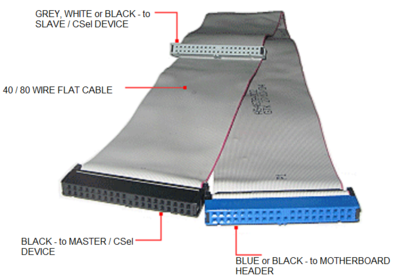First post, by ultra_code
- Rank
- Oldbie
Hello VOGONS members!
I have a weird question.
A few days ago, I noticed that when I tried to turn on my Pentium 3 machine (Pentium 3 Windows 98 SE Retro Gaming Machine: My First Retro Build), it would start to turn on, then immediately shutdown before it even reached the GPU's BIOS screen, before POST. I tried replacing the PSU and the CMOS battery. Neither worked. So, I then proceeded to remove the board from the case and start with the essentials. Thankfully, the board posted with the CPU, RAM, and the Voodoo3 installed. I then proceeded to reinstall the board into the PC case and install and test each add-in card one by one. No problems. I then reconnected the front I/O panel, floppy drive ribbon cable, and IDE cable, and that's when the PC stopped POSTing like it did before. Some trial-and-error later, it turns out that the Primary IDE port on the motherboard is to blame.
Whenever I have something connected to the "slave" connector on an IDE cable which is plugged into that Primary IDE port on the motherboard, the PC will refuse to POST. I also noted that if I go to connect the IDE cable to such a "slave" device (such as the optical drive in the system) when the PSU is "on", it will actually turn on the motherboard as if I pressed the power button (I only observed this once, though, as I didn't want to do this again 😀 ). However, the port is okay if something is attached to the IDE cable as a "master", and only as a "master". I cannot have both a "master" and "slave" drive attached to an IDE cable connected to the port, or else the same behavior would exist.
From what I can tell, either the port was somehow damaged (how, I have no realistic clue; I mean, that night or the night before, there was a lightening storm, but my apartment was not "hit", and all of my PCs, including this one, as well as all of my monitors are connected to a less-than-a-year's-old CyberPower CP1000PFCLCD PFC Sinewave 600W UPS, specifically to the "battery+surge" ports on it, so I doubt that was the cause of the problem) or there's a short on the board (although I'm pretty sure there's nothing shorting anything on the port itself; I haven't re-removed the board and looked at where the IDE port is soldering on, but I have blasted that area with compressed air; before I re-installed the motherboard, I was sure to dust the entire case, especially where the motherboard sits, too).
Thankfully, the Secondary IDE port display no such problems, so I can use that still.
But, this raises my question. What is the chance that an IDE port can mysteriously get damaged? I mean, could it just be the age of the board showing, or is there another potential cause as to this problem, and is there a solution to this "malfunction"?
Any help would be appreciated. Thanks!



